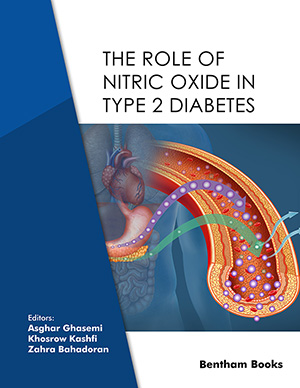Abstract
Nitric oxide (NO) donors are chemical agents that produce NO-related activity in biological systems, mimic endogenous NO-related responses, or compensate for NO deficiency. NO donors have been increasingly studied as promising therapeutic agents for insulin resistance and type 2 diabetes (T2D). Here, we provide evidence, which investigated the effects of the most frequently studied and implemented NOreleasing compounds, including sodium nitroprusside (SNP), S-nitrosothiols [RSNOs, i.e., S-nitrosoglutathione (GSNO), S-nitroso-N-acetyl-penicillamine, (SNAP)], and NDiazeniumdiolates (NONOates, i.e., spermine NONOate, diethylamine NONOate) on glucose and insulin homeostasis. Available evidence could not draw a clear conclusion regarding therapeutic applications of NO donors in T2D due to different methodological approaches (i.e., in vitro vs. in vivo) and different doses and formulations used to assess the potential effects of NO donors on carbohydrate metabolism. Considering key properties and different kinetic behaviors between various classes of NO donors, targeted compound selection, defining optimum doses, and appropriate use of NO-releasing platforms (topical vs. systemic delivery mode) seem to be critical issues that can accelerate the bench-to-beside translation of NO donors in T2D.
Keywords: Diethylamine NONOate, Insulin resistance, N-Diazeniumdiolates, Nitric oxide, Nitric oxide donors, Nitroprusside, Sodium nitroprusside, Snitrosoglutathione, S-nitrosothiols, S-nitroso-N-acetyl-penicillamine, Spermine NONOate, Type 2 diabetes.






















